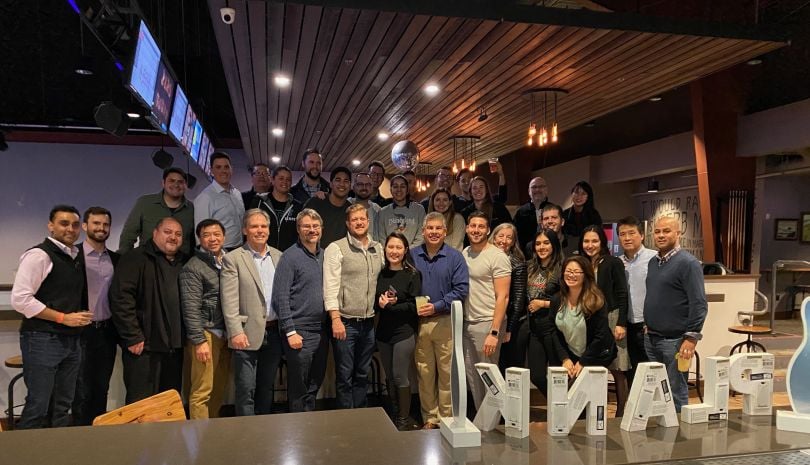
Sales might be a game of numbers that transpires over phone calls and in the boardroom, but according to Chris Park, enterprise sales director at electronics manufacturer Tempo Automation, the prospecting process is not entirely dissimilar from a sport.
“I see sales prospecting as an athletic endeavor, one that requires relentlessness, intensity and discipline over a period of time,” Park said. “This is especially the case in startup sales, where an individual is potentially responsible for bringing in a lion’s share of the company’s top-line growth.”
And, as Park’s perspective underscores, that endeavor is more like a marathon than a sprint.
“The $1 million deal that looks like it happened overnight, almost always did not,” he said.
For Park, successful prospecting hinges less on cutting-edge tools and tech, and more on the discipline and due diligence focused on polishing the fundamentals. Those measures can range from dress rehearsals prior to pitching to asking prospects hypothesis-driven questions in a meeting.
The key ingredient for any technique? Moderation.
“Every salesperson has access to more or less the same set of tools and playbooks, pitching and prospecting in more or less the same way to the same set of potential buyers,” Park said. “Overdoing any well-understood technique will only backfire. Balance is the key to mastering prospecting.”
When it comes to prospecting, what actions have you found to be critical to success?
A common mistake is when salespeople go through large peaks and troughs of prospecting activity. You forget about prospecting amid closing big deals or quarterbacking internal teams on critical customer escalations. The behaviors driving great prospecting have a lot more to do with being ruthlessly consistent than with fancy outreach tricks.
Block out time before 9 a.m. I find my pre-9 a.m. hours to be the best time to get creative on my messaging and to do write-ups for potential strategic executive-level contacts whom I’ve been meaning to reach out to, but haven’t yet found the right messaging. You’ll thank yourself at the end of the quarter or the year because the time and creativity dedicated during these blocks will add up and contribute to your “luck” in overachieving on your quota.
“The $1 million deal that looks like it happened overnight, almost always did not.”
Additionally, remind yourself of the funnel math. Any sales development representative or account executive who wants to progress should always view their daily activities in the context of the overall funnel math, even if thinking about this is not yet a part of their job description. How many meetings, calls and emails do you need in order to hit $1 million or any other number that’s meaningful for your goal? Assuming all things equal — ASP, close rate, conversion rate between each sales stage — map this out for the prospecting you’re doing, and measure yourself against it consistently. It will help expose where you need to invest more time and work and keep yourself honest about how you’re tracking toward your goal.
Also, dress rehearse your pitch and the questions at half and three-quarters speed. When you’re in the heat of a pitch meeting, it’s easy to get verbose, or worse, leave the room feeling like you haven’t quite received the clear answers you need to properly qualify the opportunity. It’s easy to get pulled into the momentum of the conversation. As social beings, we’re wired to mirror the mannerisms and tone that the other person brings to the table. Or, you tense up more than usual. This can all lead to saying too much or asking less precise questions.
What's an underrated technique or strategy that you've found to be really effective in sales prospecting?
Make prospects correct you. Make smart, educated hypotheses on the most pressing business problem you think they might be dealing with and ask your prospect. I’ve been surprised by how people will go out of their way to correct a stranger on things about themselves or the work that they do.
Let people correct you. The key here is to not make this gimmicky or a sneaky way to talk more about your product. Make it about your hypothesis of what you think they’re dealing with, based on the research you’ve done or the intel you’ve gathered so far, and ask if you’re off base. At the very least, you’ll get a response and learn something new about how your potential customers think and learn to read the market better. In the best of scenarios, I’ve seen people pick up the phone right away, call me back and we’ve talked for an hour. It can be a great opportunity for informal intel gathering, in-depth qualification and initial rapport-building with a potential champion down the road for an important deal.
Balance is the key to mastering prospecting.”
What's an overrated technique or strategy that you've found to actually be ineffective?
Any tool or technique, combined with the right timing and messaging, can be super effective. Therefore, I don’t think any specific technique or tool is overrated in and of itself. However, I do think there is a tendency to overuse certain techniques or strategies that can backfire. Specifically, I think many people earlier on in their sales careers might be tempted to make the following mistakes of overdoing.
For example, overusing the number of touches. Apollo, Groove, Outreach.io and SalesLoft are all great tools to help automate sequences with multiple outreach steps. I think the sweet spot is five to six touches max, for two reasons: at a certain point, all you will be doing is just a variant of “following up.” The incremental value of net new steps from that point onwards drops. Also, if you can’t compel a response in five touches, it probably means the messaging needs more work.
Also, over-elaborating on the product over emails. It is very tempting to describe every benefit about the product, to include every namedrop and to link to the coolest video or article about your company into one email. A good question does far more to elicit a response from a stranger than plastering their inbox screen with an overload of information.







